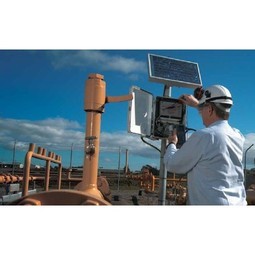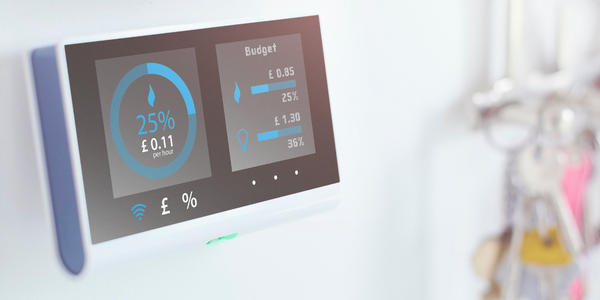技术
- 功能应用 - 计算机化维护管理系统 (CMMS)
- 基础设施即服务 (IaaS) - 公共云
适用行业
- 回收与废物管理
- 公用事业
适用功能
- 维护
用例
- 减废预测
- 智慧城市运营
服务
- 系统集成
关于客户
本案例研究中的客户是北卡罗来纳州阿什伯勒市。该市人口为 25,913 人,在管理卫生部门方面面临着挑战。该市公共工程总监 David Huutchins 和 GIS 协调员 Curtis Short 正在寻找减少开支和提高效率的方法。该市的环卫卡车每周两次到每个家庭进行垃圾收集,还有更多的卡车在每条街道上行驶,寻找需要清除的垃圾。这个过程不仅耗时,而且导致燃料费用高昂。
挑战
北卡罗来纳州阿什伯勒市正在努力解决卫生部门效率低下的问题。该市的环卫卡车每周两次到每个家庭进行清运,以清除家庭垃圾并收集可回收物品。此外,两对刷子车和散装垃圾车将穿越每条街道,寻找需要清除的废物,这一过程可能需要三周才能完成。这种方法不仅耗时,而且导致燃料费用高昂。该市迫切需要一种解决方案来简化这一流程、降低成本并提高效率。
解决方案
阿什伯勒市采用 Brightly 的软件来应对这些挑战。该软件为环卫工人配备了移动应用程序,使他们能够标记每个散装废物、瓦砾堆或任何其他需要收集的废物的 GIS 位置。这使得工作人员能够准确地看到他们需要去哪里,知道他们必须收集什么,并结合其他取货点制定最有效的路线。事实证明,该软件对于报告目的也很有用。例如,在一场重大冰暴后的清理过程中,该软件被用来标记碎片堆的坐标,提供提交给联邦应急管理局以获得报销所需的所有信息。该软件的“面包屑”功能还用于跟踪除雪机路线等内容。
运营影响
数量效益

Case Study missing?
Start adding your own!
Register with your work email and create a new case study profile for your business.
相关案例.

Case Study
IoT Solutions for Smart City | Internet of Things Case Study
There were several challenges faced: It is challenging to build an appliance that can withstand a wide range of voltage fluctuations from as low at 90v to as high as 320v. Since the device would be installed in remote locations, its resilience was of paramount importance. The device would have to deal with poor network coverage and have the ability to store and re-transmit data if networks were not available, which is often the case in rural India. The device could store up to 30 days of data.

Case Study
Automation of the Oguz-Gabala-Baku water pipeline, Azerbaijan
The Oguz-Gabala-Baku water pipeline project dates back to plans from the 1970’s. Baku’s growth was historically driven by the booming oil industry and required the import of drinking water from outside of the city. Before the construction of the pipeline, some 60 percent of the city’s households received water for only a few hours daily. After completion of the project, 75 percent of the two million Baku residents are now served around the clock with potable water, based on World Health Organization (WHO) standards. The 262-kilometer pipeline requires no pumping station, but uses the altitude differences between the Caucasian mountains and the capital to supply 432,000 m³/d to the Ceyranbatan water reservoir. To the people of Baku, the pipeline is “the most important project not only in 2010, but of the last 20 years.”

Case Study
GPRS Mobile Network for Smart Metering
Around the world, the electricity supply industry is turning to ‘smart’ meters to lower costs, reduce emissions and improve the management of customer supplies. Smart meters collect detailed consumption information and using this feedback consumers can better understand their energy usage which in turn enables them to modify their consumption to save money and help to cut carbon emissions. A smart meter can be defined in many ways, but generally includes an element of two-way communication between the household meter and the utility provider to efficiently collect detailed energy usage data. Some implementations include consumer feedback beyond the energy bill to include online web data, SMS text messages or an information display in consumers’ premises. Providing a cost-effective, reliable communications mechanism is one of the most challenging aspects of a smart meter implementation. In New Zealand, the utilities have embraced smart metering and designed cost effective ways for it to be implemented. The New Zealand government has encouraged such a move to smart metering by ensuring the energy legislation is consistent with the delivery of benefits to the consumer while allowing innovation in this area. On the ground, AMS is a leader in the deployment of smart metering and associated services. Several of New Zealand’s energy retailers were looking for smart metering services for their residential and small business customers which will eventually account for over 500,000 meters when the multi-year national deployment program is concluded. To respond to these requirements, AMS needed to put together a solution that included data communications between each meter and the central data collection point and the solution proposed by Vodafone satisfied that requirement.

Case Study
NB-IoT connected smart meters to improve gas metering in Shenzhen
Shenzhen Gas has a large fleet of existing gas meters, which are installed in a variety of hard to reach locations, such as indoors and underground, meaning that existing communications networks have struggled to maintain connectivity with all meters. The meter success rate is low, data transmissions are so far unstable and power consumption is too high. Against this background, Shenzhen Gas, China Telecom, Huawei, and Goldcard have jointly trialed NB-IoT gas meters to try and solve some of the challenges that the industry faces with today’s smart gas meters.

Case Study
British Gas Modernizes its Operations with Innovative Smart Metering Deployment
The UK government has mandated that smart meters are rolled out as standard across Great Britain by end of 2020, and this roll-out is estimated to create £14 billion in net benefits to the UK in consumer energy savings and lower energy generation demand, according to the Oxford Economics report, “The Value of Smart Metering to Great Britain.” While smart-metering systems have been deployed in many countries, the roll-out in Great Britain is unique because it is led by energy retailers, who have responsibility for the Electricity and Gas meters. The decision to have a retailer-led roll out was made by DECC (Department of Energy and Climate Change) to improve customer experience and drive consumer benefits. It has also led to some unique system-level requirements to support the unique local regulatory model.

Case Study
OneWireless Enabled Performance Guarantee Test
Tata Power's power generation equipment OEMs (M/s BHEL) is required to provide all of the instrumentation and measurement devices for conducting performance guarantee and performance evaluation tests. M/s BHEL faced a number of specific challenges in conducting PG tests: employing high-accuracy digital communications for instrumentation, shortening setup and dismantling time, reducing hardware required, making portable instrument setup, avoiding temporary cabling work and the material waste costs







